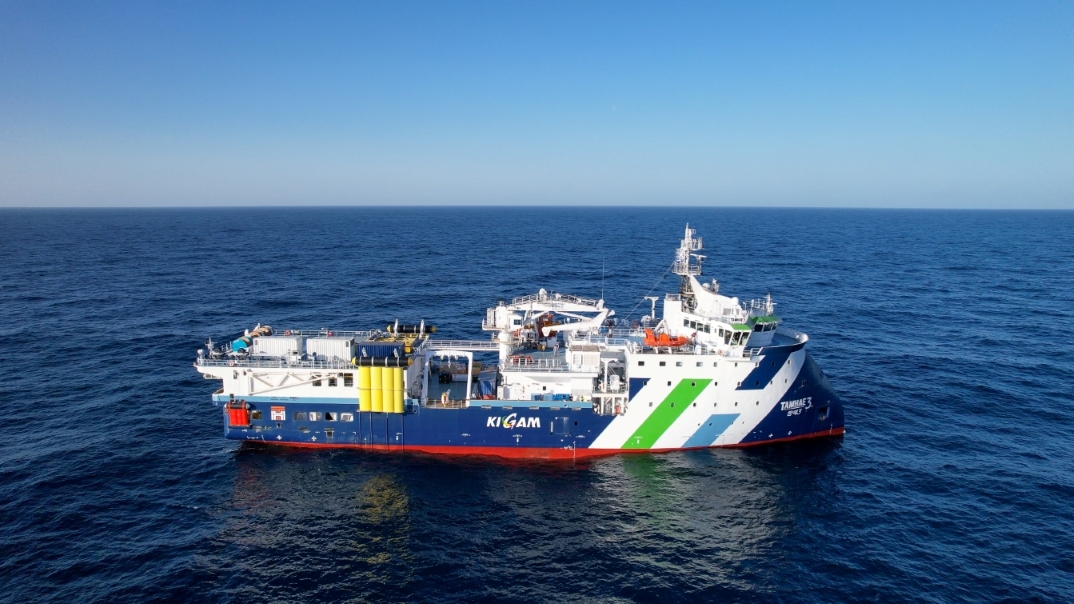
The exploration and research vessel Tamhae III on July 14 left the port of Jinhae in Changwon, Gyeongsangnam-do Province, and headed toward the open waters of the Western Pacific Ocean to look for rare earth elements under the sea. (Korea Institute of Geoscience and Mineral Resources)
By Xu Aiying
Tamhae III, dubbed a cutting-edge think tank at sea, has set sail for the Western Pacific Ocean to search for rare earth elements.
The Korea Institute of Geoscience and Mineral Resources (KIGAM) on July 14 said the exploration and research ship left the port of Jinhae in Changwon, Gyeongsangnam-do Province, for the Western Pacific to start looking for the key minerals.
A vessel for geophysical exploration and research, Tamhae III boasts the world's best exploration equipment weighing 6,862 tons and can conduct 3D marine seismic surveys using sound waves and 4D exploration that can identify changes in strata over time. Just one mission can accurately examine 4.2 square km of seabed, an area equivalent to 590 soccer fields.
The vessel seeks to find areas with high concentrations of rare earth element deposits under the Western Pacific. Such items are key raw materials whose demand has rapidly surged due to advances in cutting-edge sectors like electric vehicles, semiconductors and wind turbines.
Because most of the minerals' global output is in China, major economies have started looking for such minerals under the sea.
KIGAM obtained data on the distribution of rare earth elements in 159 areas of the Pacific through basic surveys done from 2020-23. In the process, the institute empirically confirmed that the central equatorial region and parts of the Western Pacific have high concentrations of such materials.
Tamhae III will perform on-site precision exploration of high-concentration reserve areas over the next six years. Based on seabed cores, its research will include confirming 3D reserves of rare earth elements, predicting resources using artificial intelligence and assessing development potential.
xuaiy@korea.kr